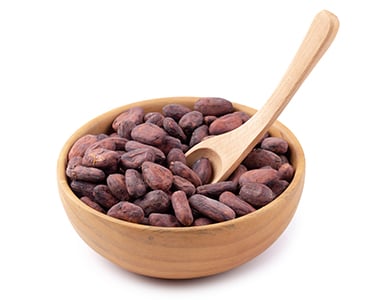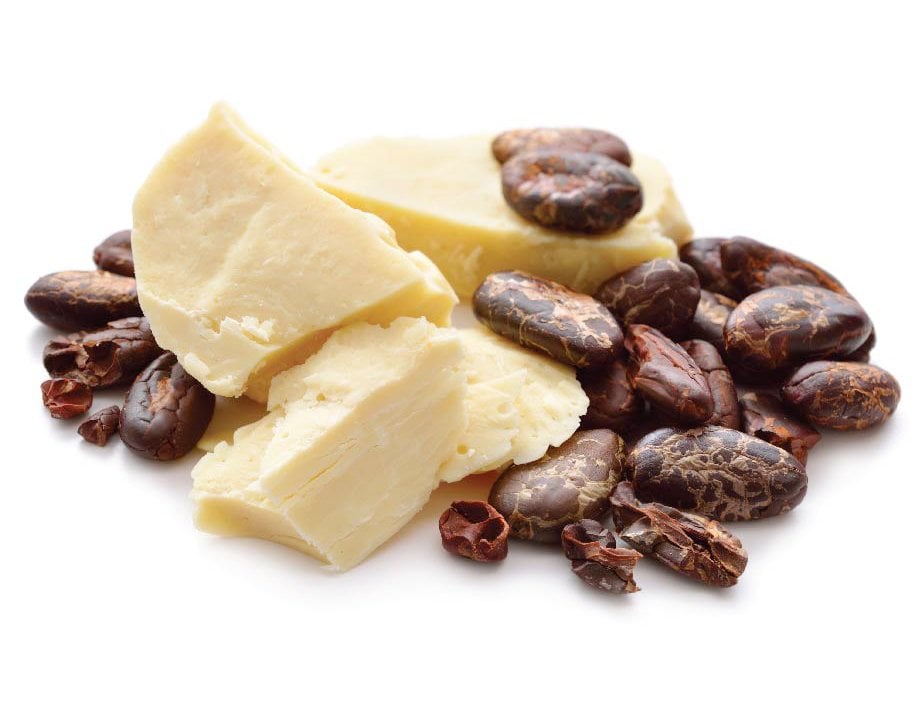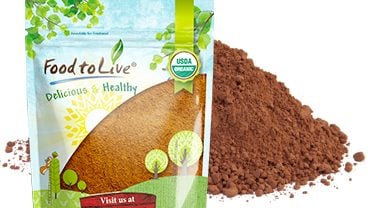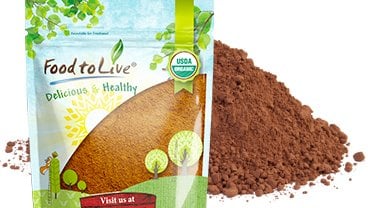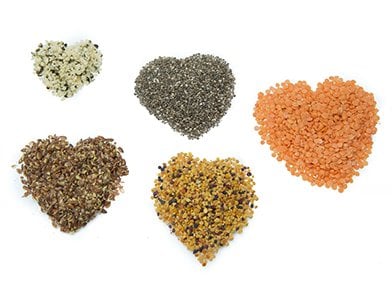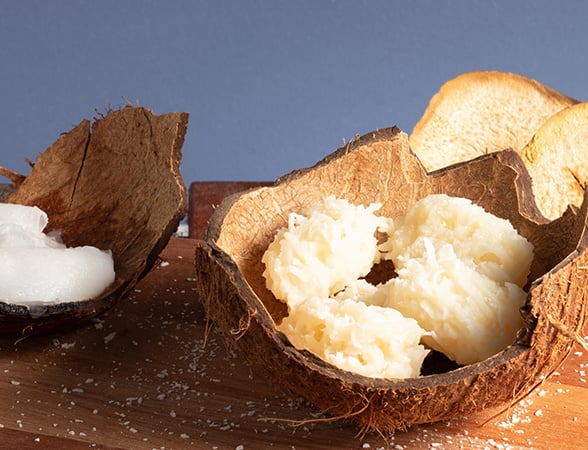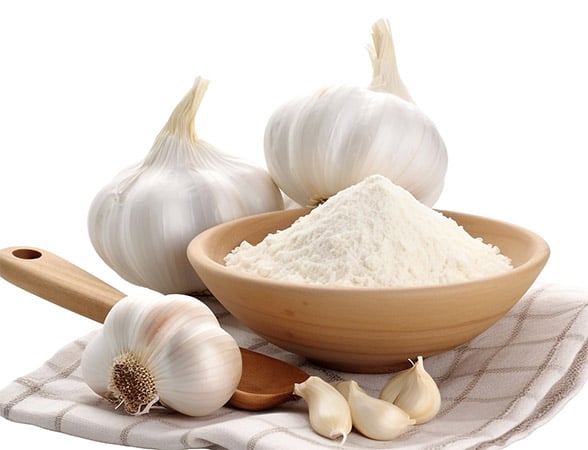January 27, 2022 · Written by Foodtolive Team
Cacao Guide: Raw Cacao and its Products
Cacao lovers must know that raw cocoa beans “absorb” the benefits of wildlife and the power of tropical forests because they are mostly cultivated in West and South African countries. But what makes cacao so unique? And why is it an integral part of modern cuisine?
To start with, cocoa beans are oval seeds found in the fruits of chocolate trees from which cocoa powder and chocolate are made. They are slightly bitter in taste with a crunchy texture and chocolate-specific aroma. Cocoa needs a high temperature, plenty of water, and air that is always moist. Therefore, cocoa is mainly grown in the hot and humid regions of Africa (mainly in forest regions), Central and South America, Asia, and Oceania. [1] Cacao is also grown in the US and other parts of the world, however, only in very limited areas where the climate can promote its cultivation.
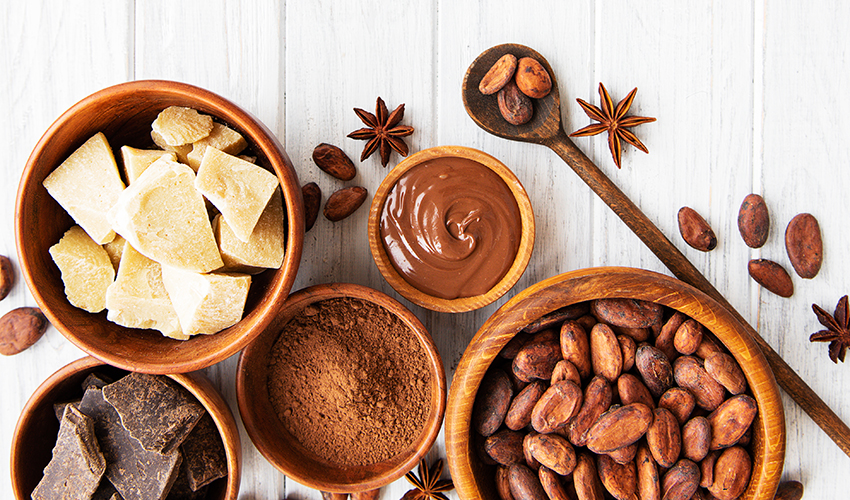
Cacao vs Cocoa
Due to a very similar phonemic representation, these two products are often mixed up even though they denote absolutely different meanings and are used for different purposes. Cacao refers to raw beans harvested from the cacao tree while cocoa refers to the products derived from roasted beans.
Healthline.com reports that cacao beans undergo a few processing stages:
fermentation(1), drying(2), roasting(3), crushing(4), grinding(5). At the first stage, producers put beans into bins and cover them for a few days so that microbes that feed on the pulp can ferment the beans – this starts to develop the distinctive chocolate flavor. The second process is drying – beans are dried for several days. Thus, they can be sold raw unless a roasted product is on demand. Roasting develops the chocolate flavor and gives them some sweetness. Two final stages – crushing (separating hulls) and grinding allow to convert cocoa nibs into a fine powder. [2]
Food to Live cacao powder is roasted and fermented. Our cocoa beans undergo drying and fermentation processes to develop the flavor and characteristic color of chocolate. The amount of caffeine present in the grains depends on the type of grain and the degree of fermentation applied to them.
Below is the table of comparison of Food to Live cacao and cocoa powders in the smallest measurement unit (1oz = 28g) [3], [4].

Raw cacao products
Apart from cacao and cocoa powder, you can find other raw cacao products on our website: cacao beans, cacao nibs, cacao paste, cacao butter. Let’s make a general overview of each:
1. Cacao Beans
Inch-long seeds with a crunchy texture
A bitter, earthy-like flavor
Health benefits:
- serve as a natural antidepressant due to the content of dopamine, phenylethylamine and serotonin, which maintains mental health, improve mood, and relieve fatigue;
- improve blood circulation;
- positively affect the cardiovascular system due to the content of polyphenols and magnesium;
- energy-boosting drink and a wonderful substitute for coffee (one serving of snacking cacao contains about half the caffeine of a brewed cup of coffee!)
- rich in essential vitamins such as Vitamin PP, Vitamin B1, and Vitamin B2;
- raw cocoa beans contain more than 320 types of various antioxidants. Just imagine – no other product in the world contains so many antioxidants!
Uses:
Cocoa beans can be used as a healthy snack or with tea. Still, you are unlikely to eat more than 20 nuts because after a few pieces you will feel satiated.
Precautions:
Due to its high-calorie content cacao beans are NOT recommended for people suffering from obesity. Beans also contain caffeine, so hypertensives and pregnant women should consult with a doctor before intake.
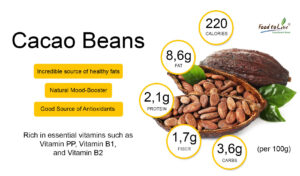
2. Cacao Nibs
Slightly chewy in texture
Taste like unsweetened dark chocolate
Health benefits:
- an excellent source of iron, protein, magnesium, potassium, fiber;
- immune system booster;
- anti-inflammatory properties;
- prevents tooth decay due to the content of crystalline extract that strengthens tooth enamel.
Uses:
You can use cacao nibs in both sweet and savory recipes:
- they can be a great substitute for chocolate chips;
- used as a topping;
- you can add them to smoothies or simply eat them as a quick snack.
Precautions:
Despite all the benefits of cacao beans, consider potential side effects such as anxiety, jitteriness, and trouble sleeping that can be caused by excessive intake.
Note, however, if you consume in reasonable amounts, you are unlikely to experience any health issues.
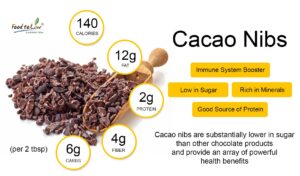
3. Cacao Paste
The same as cacao beans in taste
Health benefits:
- contains various microelements, vitamins, proteins, mono, and polysaccharides;
- involves powerful anti-allergenic and antioxidant properties;
- lowers blood pressure.
Uses:
The cocoa paste is used in the confectionery industry for the production of chocolate, glazes, and premium sweets.
Precautions:
As with any other cacao product, eating large amounts of cacao paste might cause caffeine-related side effects such as increased urination, sleeplessness, and a fast heartbeat.
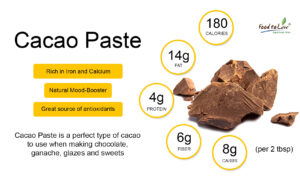
4. Cacao Butter
Sweet chocolate flavor and aroma
Health benefits:
- contains Omega-3, Omega-6, Omega-9 acids;
- strengthens hair and nails;
- boosts immunity;
- rich in fatty acids and a complex of essential vitamins
Uses:
Since Cacao butter is enriched with fatty acids, it is widely used in cosmetology and medicine: for the manufacture of creams, shampoos, soaps, and other products for body, face, and hair care.
Precautions:
The product contains caffeine that can have a negative effect on the nervous system. Cacao butter can provoke allergies, so you should consult with a medical expert before adding it to your daily diet.
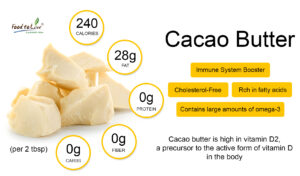
The advantages of raw cacao products definitely outweigh the disadvantages. Despite the content of caffeine, this amount is insignificant compared to tea and coffee – so the cocoa drink is virtually harmless to the cardiovascular system. The secret of why we love cacao products and chocolate in particular lies in the fact that they contain tyramine and phenylethylamine, both of which have similar effects to amphetamines. Theobromine and caffeine are known for being great stimulants. Roasted beans (from which the chocolate is produced) contain a number of interesting psychoactive chemicals including anandamide, a neurotransmitter whose name is translated from the Sanskrit as “ananda”, meaning “joy, bliss, delight”. Anandamides stimulate the brain in much the same way that cannabis does. The combination of these and other aroma molecules creates a unique chemical signature that our brains are prone to love. [5]
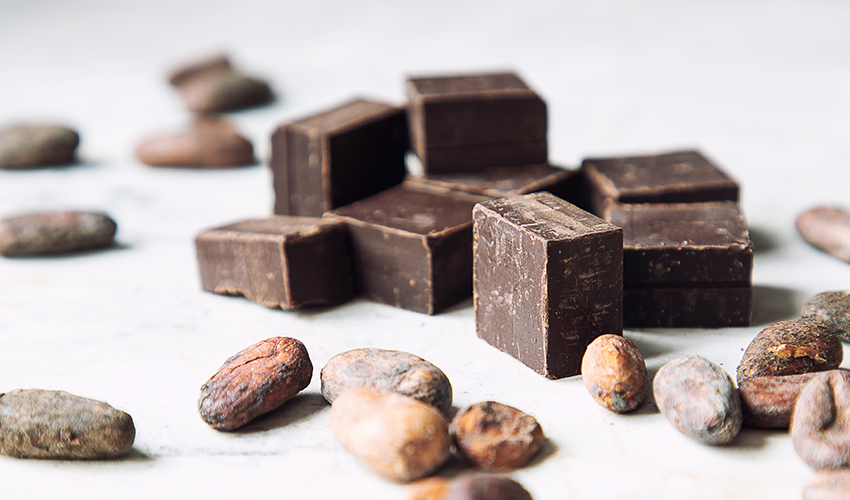
Healthier versions of chocolate
W. Jeffrey Hurst, principal scientist at Hershey Co., and his colleagues have compared the number of antioxidants in cocoa-containing products. There were natural cocoa, unsweetened baking chocolate, dark chocolate, semisweet baking chips, milk chocolate, and chocolate syrup among the products they compared. They discovered that natural cocoa contains the most antioxidants, followed by baking chocolates, dark chocolates, baking chips, and finally milk chocolate and syrups when compared on an equal weight basis. Based on their findings you may be better off choosing natural cocoa if you want to consume a lot of chocolate.[6]
In conclusion, the chocolate tree is a wonderful combination of useful elements and a source of what all kids are fond of – chocolate. Raw cacao products vary from the beans of the tropical African cacao tree to the hot cacao drink made from it. What makes cacao so special is its unforgettable taste and good content of antioxidants, polyphenols, flavanols; magnesium, iron, fiber… On top of that, raw cacao products restore energy and hormonal balance, improve vision, improve performance, raise the tone, and have antidepressant effects. After further processing, the product can lose its essential properties though. So make sure to prioritize raw cacao products over roasted ones. And of course, look carefully through the nutrition information on the labels. The fewer additives, the better.
Sources:
- https://www.fao.org/3/ad220e/ad220e01.htm
- https://www.healthline.com/nutrition/cacao-vs-cocoa#nutrition
- https://foodtolive.com/shop/organic-cacao-powder/
- https://foodtolive.com/shop/organic-cocoa/
- https://www.bbc.com/news/health-39067088
- https://www.acs.org/content/dam/acsorg/education/resources/highschool/chemmatters/chocolate-the-new-health-food-or-is-it.pdf

